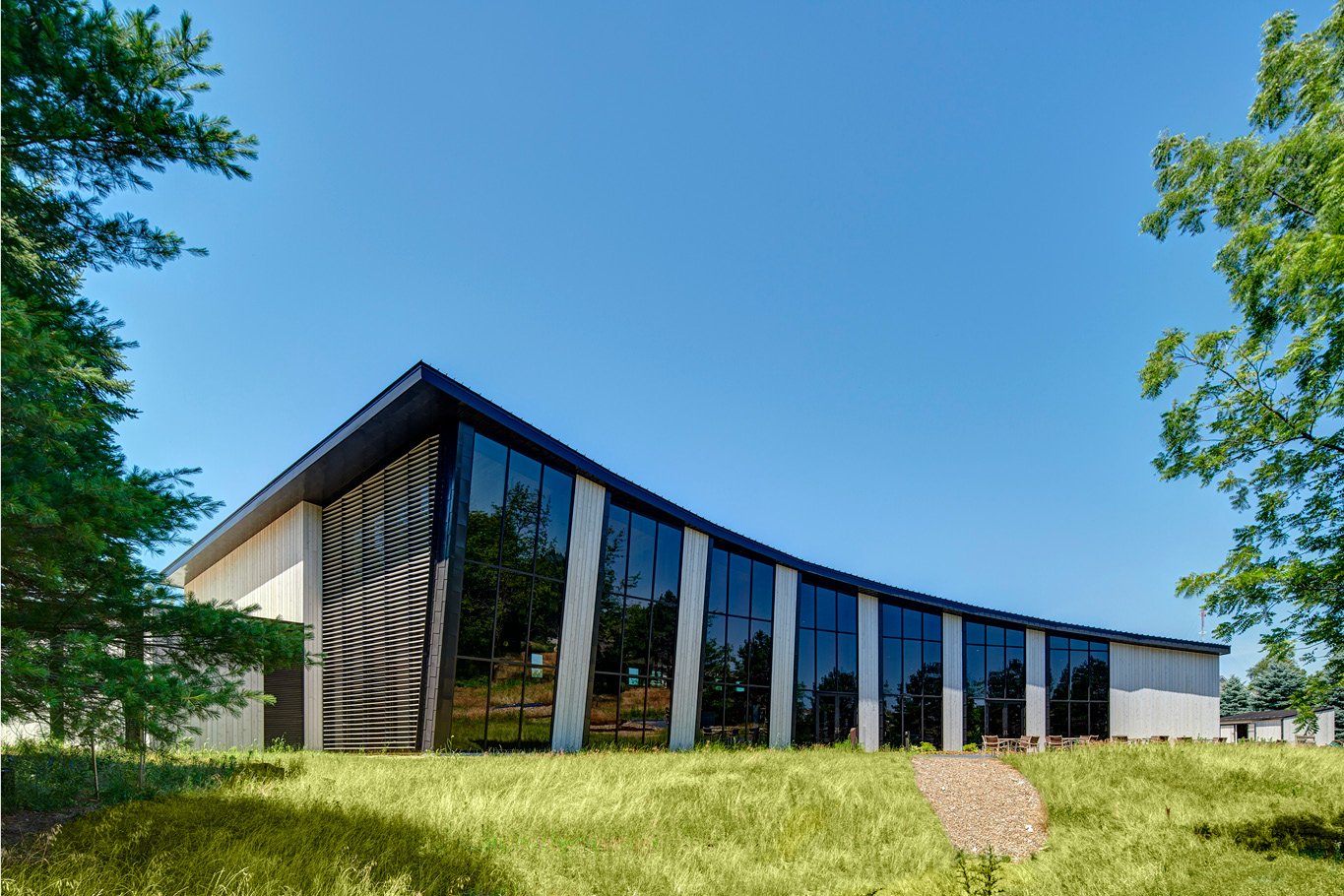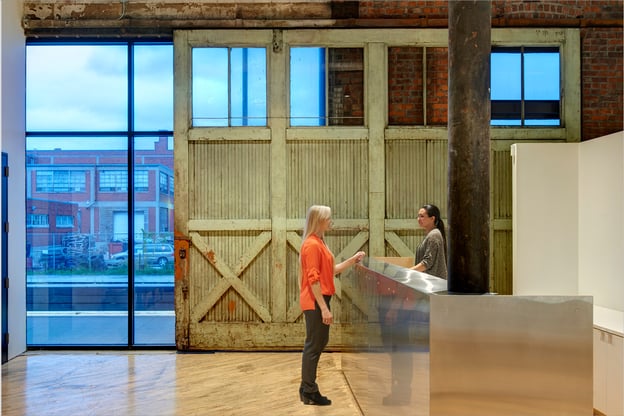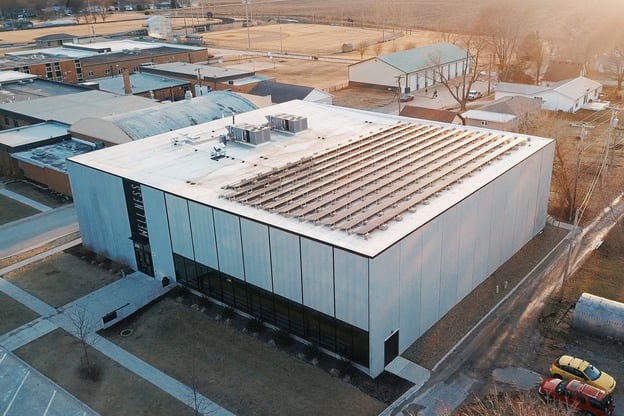What the AIA Framework for Design Excellence Means for Your Project

Every building project is an opportunity to reduce your carbon footprint, improve occupant well-being, and make a positive community impact. However, the route toward sustainability is not always clear, and many building owners do not know where to begin.
In our experience, one of the best starting points for sustainable design is the American Institute of Architects (AIA) Framework for Design Excellence. The Framework provides a holistic approach to sustainability by addressing energy performance, equity, occupant health, and resiliency strategies.
Following the Framework helps you make sustainable decisions from the project’s onset and sets you up for success if you choose to use a green building rating system like LEED, WELL, or Living Building Challenge (LBC).
This article will explain the Framework for Design Excellence in greater detail and break down its ten principles, helping you visualize how it can apply to your project.
The Framework for Design Excellence
An architect’s job is to protect the health, safety, and welfare of the public. This call has a broader meaning amid challenges like climate change and social inequality.
The Framework for Design Excellence was created to harness creative solutions to these complex issues. Straightforward and accessible, it helps architects and clients promote a more sustainable, equitable, and resilient built environment.
The Framework is not a replacement for green building rating systems. These systems provide vital third-party proof that your building was designed and is operating as intended.
Instead, the Framework is another path toward sustainability. Thinking through its principles and brainstorming solutions gives you a solid foundation whether or not you choose to use a third-party system.
The Ten Principles of the Framework
The Framework consists of ten principles. On each project, we think through these principles and brainstorm solutions to address each.
We find this process is most effective when it includes you and your team. By surfacing ideas together, we can find solutions that address your unique needs as well as broader social and environmental challenges.
1. Design for Integration
The first principle proposes that every building project should deliver beauty and function, no matter how small. It encourages design solutions that respond to and take inspiration from the natural and cultural environment. At the same time, it recommends an inclusive design process that engages a diverse group of stakeholders.
2. Design for Equitable Communities
Buildings often outlive their original occupants. During the design process, architects and clients should consider the broader community and how their decisions will impact future generations.
The principle calls for public workshops and design solutions that align with community goals. It also encourages resiliency strategies that respond to emergencies. You may consider how your building can provide shelter in a natural disaster.
3. Design for Ecosystems
This principle encourages you to consider your building’s impact on wildlife and the landscape. You and your design team should research your building site and its geology, climate, and ecosystem. Collaborating with outside experts like ecologists can help you accomplish these goals.
The Framework encourages you to use native plantings, especially those that attract pollinators. It also recommends strategies that prevent bird collisions and reduce artificial light, helping protect local habitats.
4. Design for Water
Although it's often treated as expendable, water is a precious resource. This principle promotes water conservation and improved water quality.
Specifically, it recommends strategies that reduce or eliminate outdoor water usage and minimize potable water. It also encourages on-site storm water management and filtration. On-site filtration puts less pressure on municipal storm water systems and helps keep water resources clean.
5. Design for Economy
One of the biggest misconceptions about sustainable design is that it’s expensive to implement. While some strategies may increase your budget, others can be added at no extra cost. At the same time, sustainable design strategies provide long-term value, helping you reduce the cost of building operations.
This principle encourages designers to maximize the impact of a client’s dollar. It recommends strategies like reusing existing buildings, simplifying material palettes, and right-sizing programs to reduce square footage. It also encourages designers to think long-term and find ways to create operational efficiencies.

Design for Economy encourages the adaptive reuse of existing buildings.
6. Design for Energy
Energy is perhaps the first thing that comes to mind when people think about sustainable design. This principle helps you decarbonize your footprint, reduce utility costs, and prepare for Net Zero operations.
On the design side, it recommends strategies like energy modeling, commissioning, and post-occupancy evaluations. It also encourages clients to adopt non-combustible forms of energy like solar panels or prepare to implement these systems in the future.
7. Design for Well-Being
Sustainable design should also benefit occupants. Throughout the design process, you should consider the building’s physical, mental, and emotional effects on those who use the space daily.
This principle encourages strategies that improve air quality, increase access to natural light, and promote movement and social interaction. It also recommends the use of biophilic design to connect occupants with nature.
8. Design for Resources
Material selection is a core component of every building project. This principle helps you minimize waste and choose safer, healthier, and more durable products.
It encourages design teams to research material sourcing and embodied carbon levels. Additionally, it calls for waste management plans during construction and encourages clients to develop plans to minimize or eliminate operational waste.

Design for Energy encourages building owners to adopt solar panels.
9. Design for Change
The most sustainable building is one that is already built. This principle encourages you to plan flexible and adaptable spaces that respond to your changing needs, reducing the need for new construction in the future.
At the same time, buildings should be prepared to face various social, economic, and environmental hazards. The Framework recommends design teams and clients discuss disaster-preparedness and set performance goals.
10. Design for Discovery
Every building project is a learning experience and an opportunity for improvement. This principle encourages architects to share lessons with the broader design community, helping everyone work toward a more sustainable future. Design teams and clients should benchmark previously built projects and find ways to apply innovative strategies to their work.
At the same time, it encourages design teams and clients to keep in touch well after a project’s completion. Your architect should perform a post-occupancy evaluation and ask if the space is meeting your expectations. Feedback and open dialogue are key to a project’s success.
Ready to Learn More?
Implementing sustainable design strategies can feel daunting. You may not know where to begin or where to prioritize your efforts. Your design team is there to guide you through the process and help you find solutions that align with your goals.
The Framework for Design Excellence is a great starting point for any building project. It provides a holistic approach to sustainability, covering everything from energy performance to disaster preparedness. Thinking through its ten principles and brainstorming solutions will help you create an impactful project that protects the environment and enlivens your community.
To understand the Framework for Design Excellence, it helps to see it in action. Read about Iowa City Public Works and learn how the project addressed these ten principles.